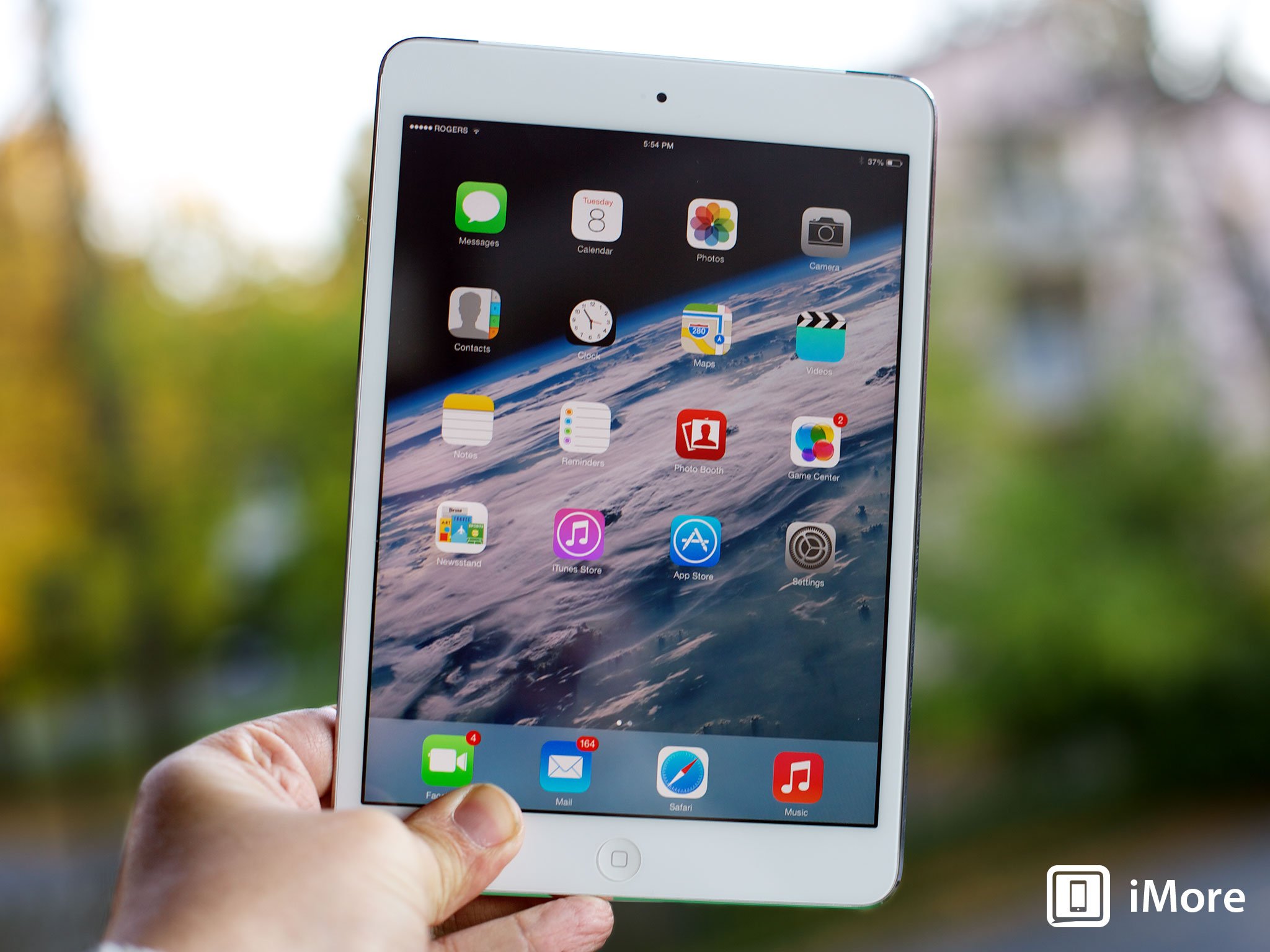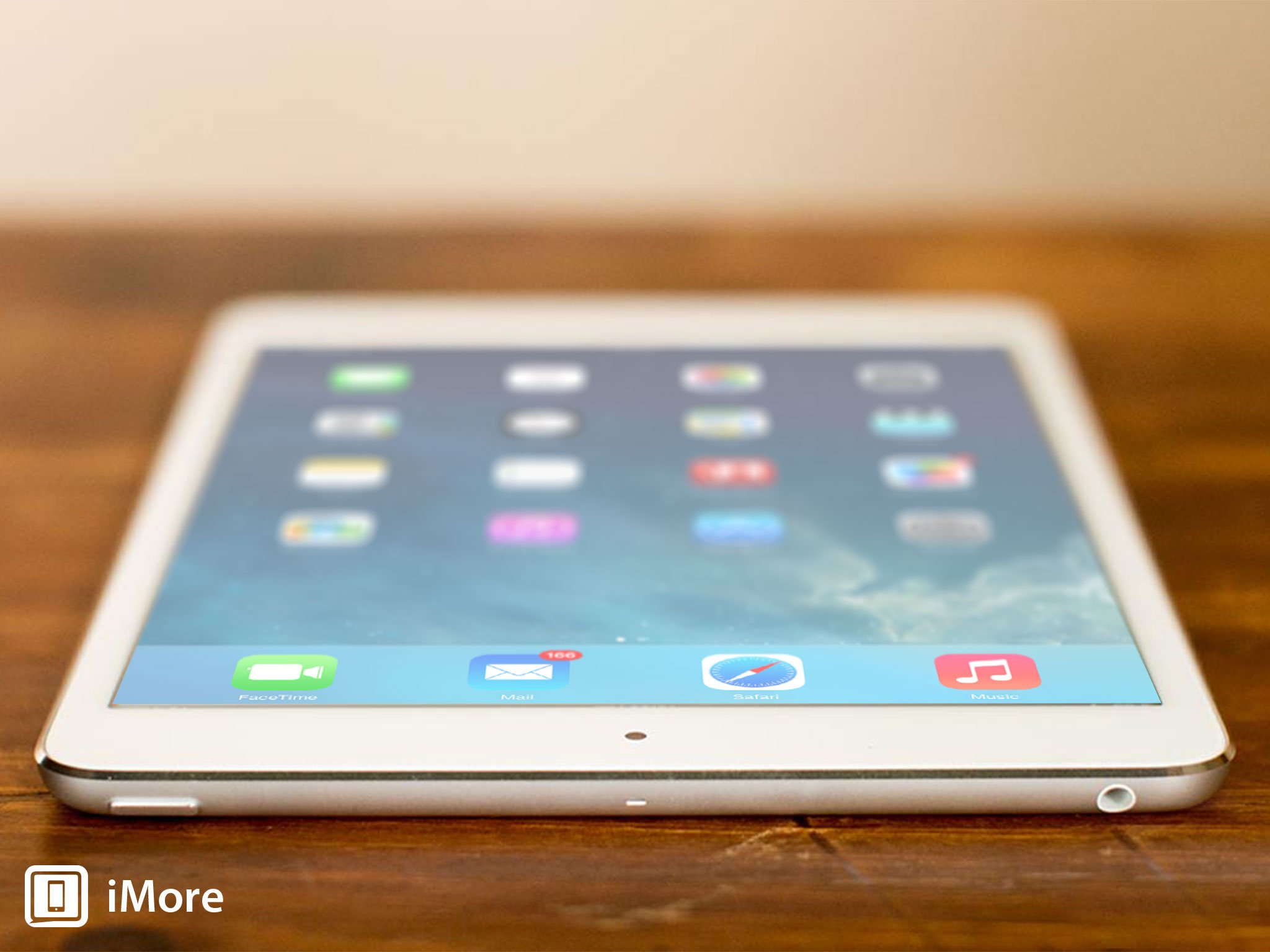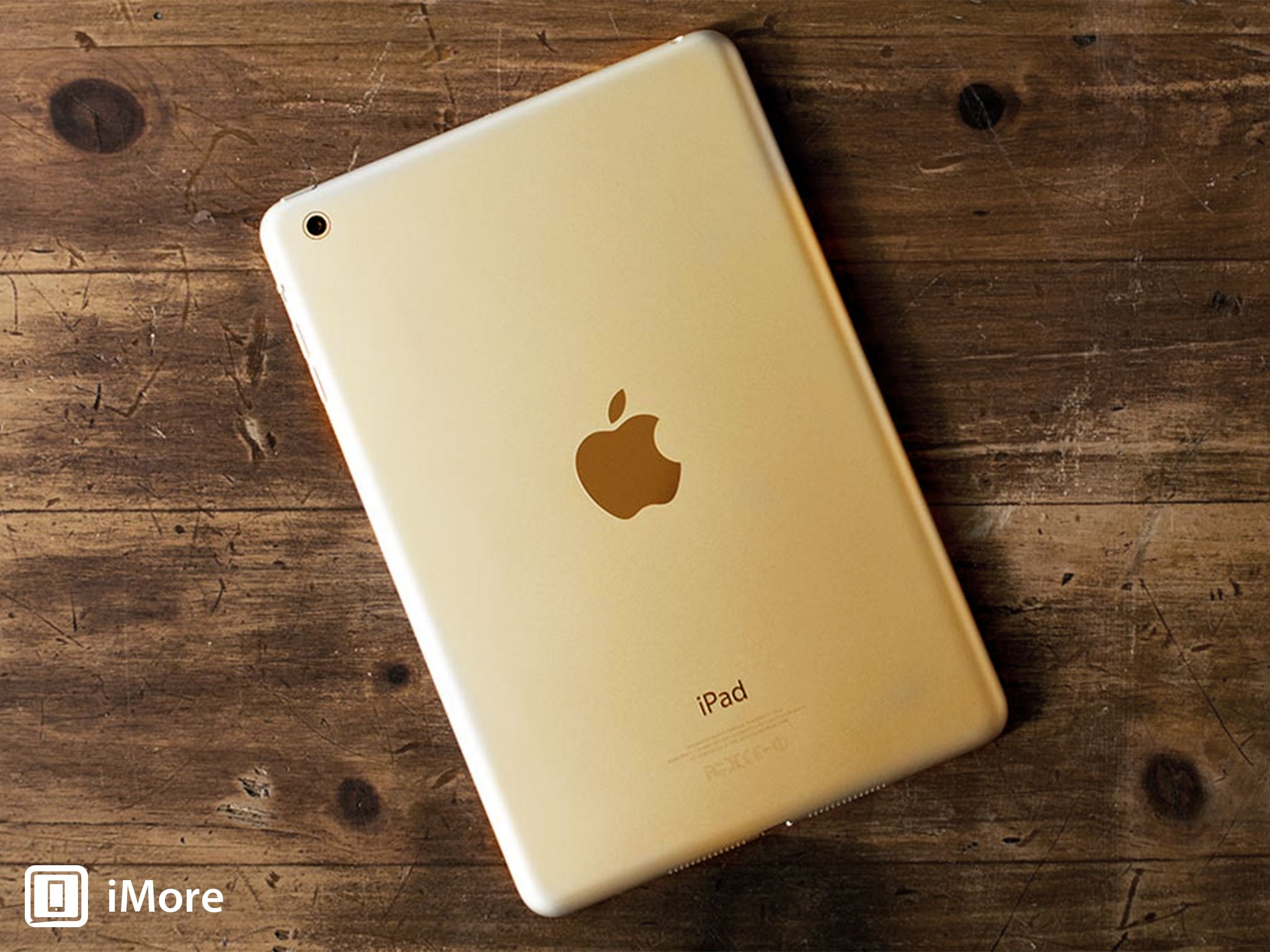Imagining iPad mini 2: Retina display and the gold play?

Analyzing rumors and speculation surrounding Apple's 2nd generation iPad mini, Retina display, and metallic finishes
When the iPad mini launched it garnered universal acclaim for its smaller, thinner, and lighter 7.9-inch form factor that looked light-years ahead of the then 4th generation iPad. Slightly cheaper, the only thing it really seemed to lack was the high density Retina display of its 9.7-inch elder sibling. The reason for that? Retina is hard. You can have Retina, you can have lightness, and you can have battery life, but not all three at the same time. At least not back then. So what about now? Has time let technology catch up? Can Apple ship a Retina iPad mini in 2013?
Retina tax facts

Every device, when it goes Retina for the first time, pays a price in performance. Moving around pixels requires power, and Apple typically pushes the boundaries of what their chipsets can do. That means the graphical processors (GPU) are typically redlined in first-generation Retina devices, doing everything they can simply to push @2x the graphics. The iPhone 4 suffered from this. The Retina MacBook Pro suffered from this. The iPad-3 suffered so badly from this Apple killed it within 6 months. It's the cost of clarity. However, second generation Retina devices, with their more powerful processors, typically do much better. The iPhone 4S and iPad 4 were both much better Retina devices. The Haswell Retina MacBook Pro should likewise be a better Retina device, because the tax has been paid.
When the iPhone 5 went to a 4-inch display, there was no perceptible performance hit, even though the pixels went from 960x640 to 1136x640. A retina iPad mini would likely be similar. Apple has already figured out how to power the 2048x1536 Retina display of the iPad 4 at 264ppi, so powering the same display on the iPad mini 2 at 326ppi wouldn't be too much of a stretch. Most of the tax has already been paid, and newer chipsets like the Apple A6/X and Apple A7/X would hopefully more than make up for any difference the higher density may demand.
So how did Google and Amazon and other competitors manage to go "Retina" with their tiny tablets earlier than Apple? Again, it's the raw pixel count that matter. 1920x1200 (2,304,000 pixels) at ~7 hours of batter life is significantly less than 2048x1536 (3,145,728 pixels) at ~10 hours of battery life. It requires more backlight, it requires more GPU, and it requires more power overall. It's why Apple, the company famous for ever-thinner devices, had to make the iPad 3 thicker than the iPad 2 when it went Retina.
Does the average non-geek know or care about Retina? Would some prefer a faster iPad mini to a denser iPad mini? (Arguably a faster iPad 2 would have been much better than the Retina iPad 3). These are the questions Apple has to balance during the transition.
Apple's a smart company, though. They no doubt have their bases covered with next generation versions of both the standard iPad mini, and the Retina iPad mini. We'll see the latter as soon as battery life allows it.
I'm guessing it'll be October 22 of this year.
iMore offers spot-on advice and guidance from our team of experts, with decades of Apple device experience to lean on. Learn more with iMore!
Gold standards and deviations

Last year's iPad mini came in the same metallic finishes as last year's iPhone - white and silver and black and slate. Slate, like all shades approaching black, turned out to be extremely challenging to anodize. So, for the iPhone 5s, Apple switched to space gray. Does that mean Apple will switch to space gray for the iPad mini 2 as well? Likely, and for the same reasons. Not only does it look great, space gray is far more durable and resilient than slate, and less scratches and chips mean more happy customers.
The iPhone 5s also came in gold. Easy to produce and a hit either by sheer popularity or due to scarcity, it would also be an interesting option for the iPad mini 2. While Apple likes to keep uniformity in their product lines, what looks great at 4-inches might not hold up so great at 7.9-inches. However, with no design changes due this iPad mini tock cycle, a little superficiality could go a long way.
Would iPhone 5c-style unabashedly plastic colors work even better then? Maybe one day. Right now Apple has shifted the iPod touch down to the popular, colored end of their non-phone mobile device spectrum, and let the iPad mini sit alongside the full-sized iPad at the top. While "fun" is certainly a brand value Apple could use for the iPad mini one day, it's probably not today.
More to come
iMore will be providing complete coverage of Apple's October 22 iPad and Mac event, including and especially the iPad 5 and iPad mini 5.

Rene Ritchie is one of the most respected Apple analysts in the business, reaching a combined audience of over 40 million readers a month. His YouTube channel, Vector, has over 90 thousand subscribers and 14 million views and his podcasts, including Debug, have been downloaded over 20 million times. He also regularly co-hosts MacBreak Weekly for the TWiT network and co-hosted CES Live! and Talk Mobile. Based in Montreal, Rene is a former director of product marketing, web developer, and graphic designer. He's authored several books and appeared on numerous television and radio segments to discuss Apple and the technology industry. When not working, he likes to cook, grapple, and spend time with his friends and family.
